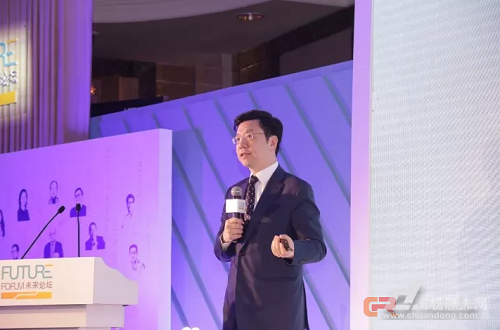On October 28th, during the "Future Forum" awards ceremony and annual meeting, Li Kai, chairman of the board and CEO of Innovation Forum, delivered a keynote speech. He emphasized that the biggest challenge to future traffic lies in human behavior, and that full autonomy could be the solution.

In his address, Li Kai pointed out that removing human involvement from transportation could significantly improve safety and make traffic patterns more predictable. He argued that most accidents are caused by human error—emotions, distractions, or delayed reactions.
He referenced an experiment conducted by Google, where employees were asked to drive their own cars home while being prepared to take control if needed. However, the results showed that people rarely followed the instructions. Instead, they engaged in activities like watching videos, using their phones, or even lying down in the back seat. This highlighted a key issue: humans cannot be fully trusted in driving scenarios.
Li Kai stressed that true driverless technology must eliminate any human intervention. There is no such thing as "human-robot collaboration" in this context. The goal is complete automation, where the system can handle all situations without human input.
He also discussed how artificial intelligence is transforming transportation. With AI, smart cities can optimize traffic flow, reduce congestion, and enhance safety. Companies like Google and Baidu are already leveraging vast amounts of data to improve navigation and real-time decision-making.
The amount of data involved in smart transportation is exponentially larger than what we see today. As more sensors are deployed across vehicles and infrastructure, the ability to process and analyze this data will become crucial. For instance, companies like Mobike are generating massive data sets through every ride, helping to refine traffic predictions and optimize vehicle distribution.
Another example is the use of computer vision in traffic management. Face++ has implemented systems that can detect traffic violations, such as running red lights, and automatically send tickets to offenders. These technologies are not just theoretical—they're already being applied in real-world settings.
Li Kai also mentioned that autonomous vehicles should first be introduced in controlled environments, such as highways, airports, and logistics operations. These areas offer fewer variables and allow for safer data collection. Once these systems prove reliable, they can gradually expand to more complex urban environments.
Despite the technological advancements, there are still challenges. Human behavior remains unpredictable, and legal and ethical concerns persist. For example, self-driving cars may face moral dilemmas in emergency situations. Addressing these issues requires clear regulations and continuous innovation.
Looking ahead, Li Kai believes that smart transportation will be one of the most transformative forces in society over the next 15–20 years. With investment from capital, industry leaders, and top talent, the challenges of autonomy and safety will eventually be overcome. The future of mobility is not just about moving faster—it's about moving smarter.
Voltage Protector Socket,home depot voltage protector socket,lowe's voltage protector socket,target voltage protector socket
NINGBO COWELL ELECTRONICS & TECHNOLOGY CO., LTD , https://www.cowellsocket.com